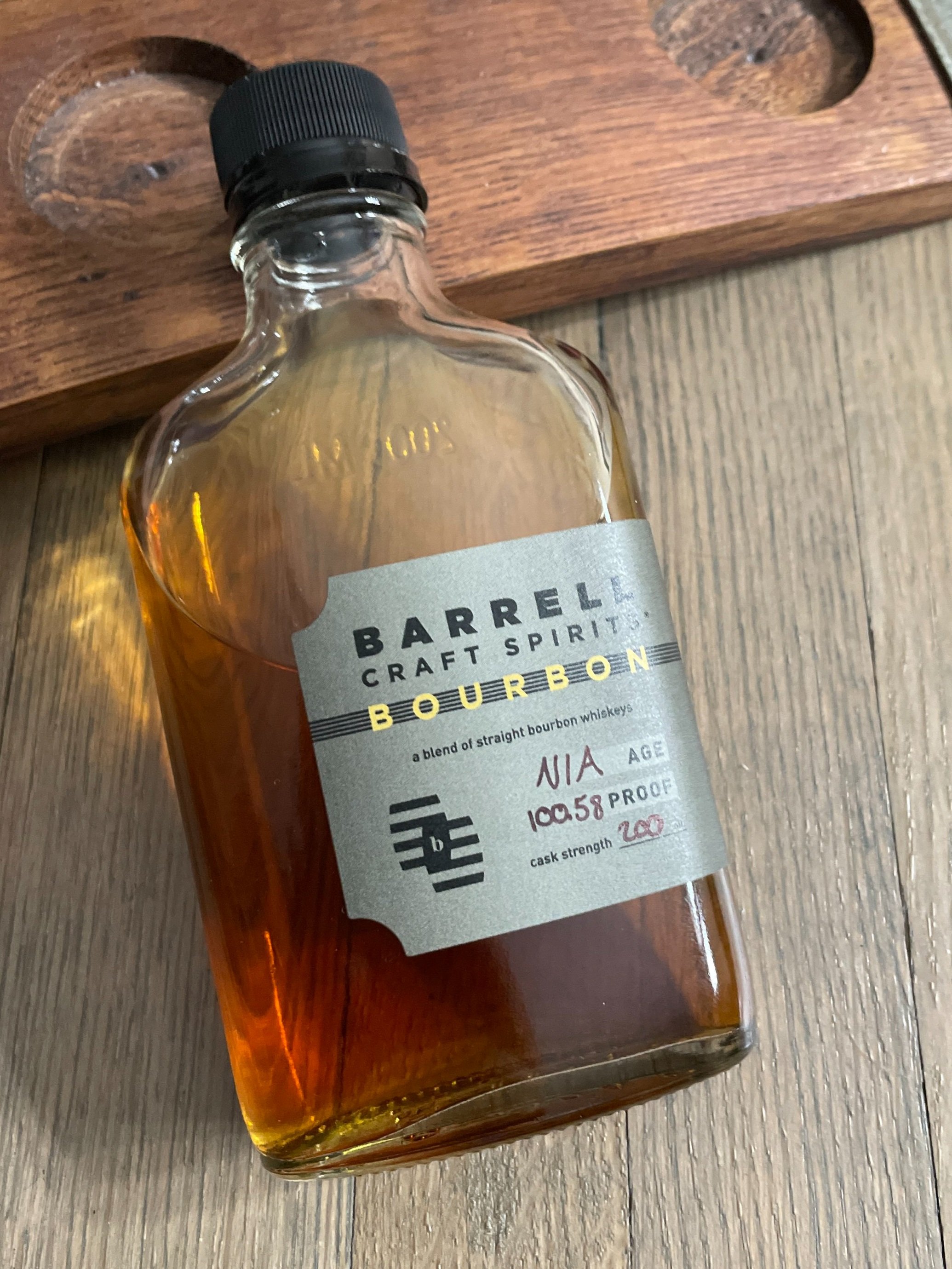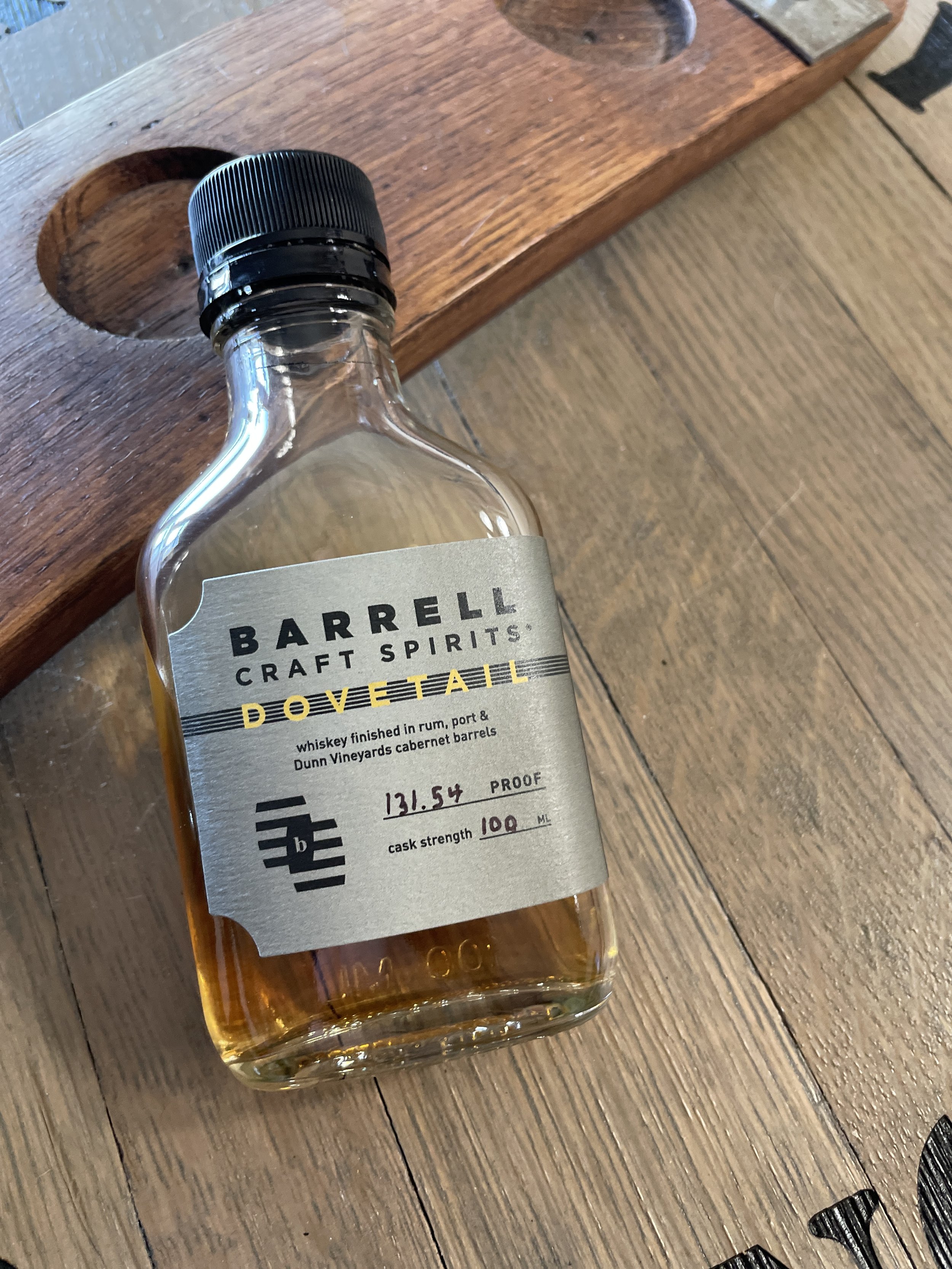Barrell Vantage Bourbon Whiskey
Barrell’s newest blending project has arrived! Barrell Vantage is the fourth named expression (following Dovetail, Armida, and Seagrass) to highlight Barrell’s blending skill, this time using different cooperage to finish the component whiskies rather than wines and other spirits.
Vantage uses three types of cooperage: Mizunara oak (native to Japan), French oak, and Toasted American Oak. Three component whiskies are also included, one each from Tennessee, Indiana, and Kentucky (as always, the exact proportions are undisclosed). According to Barrell, each whiskey was deliberately paired with one of the three wood types above to best suit the desired profile.
To me, the most interesting part of this experiment is that all three cooperages were virgin oak, meaning none had been previously used. Undoubtedly this was chosen to ensure each type of wood would present as clearly and as strongly as possible - though I would love to know how much that brand new Mizunara wood cost them.
Let’s briefly go through each type of oak:
Toasted American Oak: this will bring many familiar flavors to bourbon drinkers, such as vanilla, caramel, and light baking spices. The toasting will add more caramelization, leading to added marshmallow, stronger cinnamon and clove, and to some drinkers a deeper lactone profile (coconut). For a good example, look to Michter’s Toasted products and Daviess County Lightly Toasted Bourbon.
French oak: this one is for the wine lovers out there. French oak adds tannic backbone (think of a big, bold red wine), dark chocolate, roasted coffee, light perfume or incense (I personally get sandalwood), and white pepper spice. Tobacco can also come out, usually in a dried form like a cigar being rolled. For this, look to Dancing Goat Distillery’s Limousin Rye and Daviess County French Oak.
Mizunara oak: translated as “water oak” (mizu = oak, nara = water), this tree is native only to Japan and is a beast to use for barrels. It is more porous, leading to more evaporation; unlike American oak, which grows straight and tall with few branches, Mizunara grows slowly, requiring up to 200 years to mature, with many bends and knots. This makes finding Mizunara suitable for barrels incredibly hard to find, as knots and bends mean leaks and instability. It is also incredibly expensive - a single new barrel can cost $6,000 or more. Mizunara imparts coconut, sandalwood and frankincense, incense more generally, a mild green peppercorn spice, and bright spices like cardamom. For budget-conscious options, check out Dewar’s Japanese Smooth, Chichibu Japanese Whiskies, and Bainbridge Mizunara.
Zooming out for a minute, this project plays on a classic adage in American whiskey: anywhere from 50-80% of the whiskey’s flavor comes from the barrel (that percentage varies literally person-to-person if you ask distillers, coopers, and blenders). The story of Elijah Craig being the first to char barrels for use in transporting whiskey is a central pillar - whether true or not - in Kentucky’s bourbon lore.
The barrel is without question the greatest influence on a whiskey’s flavor. Depending on the char, toast, type of oak, first-fill/virgin or used cask, barrels impart myriad flavors, feelings, colors, and more to the spirit inside. Other variables such as temperature and humidity fluctuation ultimately manifest through the barrel’s interaction with its contents - indeed, the barrel’s influence cannot be divorced from any subsequent influence that occurs post-distillation.
In that way, Barrell Vantage explores how the barrel, when “specifically identified bourbons [are paired] with carefully selected cooperage”, enhances the flavor of those component whiskies.
Zooming back in, I do believe that Barrell Vantage accomplishes its goal. Each of the oak species used are clear at different points in the experience, and each bring something to the blend. My notes are surprisingly similar to those from Barrell, right down to the overall “warmth” of this dram. Assuming the usual suspects, the whiskies aren’t lost, either, something I’ve complained about in previous named releases that had too much finishing influence.
While I’d love to know which whiskey was paired with each oak, I’ll leave that for Barrell to reveal (or not). In the meantime, I would consider this the most successful off-the-bat release of the four named ones, even more so than Dovetail (which I love more each time I drink it). Vantage’s exploration of wood finishing and pairing those woods with individual whiskies, later blending them into a coherent whole, is an exciting entry to the American whiskey-finishing landscape.
All I ask is to try the individual pairings - that would truly be a bold move that nobody else would do. I hope Barrell does this, even if blind. We whiskey nerds need to know!
Thank you to Barrell Craft Spirits and Ro-Bro Marketing for providing this bottle for review purposes with no editorial constraint.
Barrell Vantage Bourbon Whiskey: Specs
Classification: Blend of Straight Bourbon Whiskies Finished in Mizunara, French, and Toasted American Oak
Origin: Undisclosed Distilleries in TN, KY, and IN (One Per State)
Mashbill: Undisclosed
Proof: 114.44 (57.22% ABV)
Age: NAS
Location: Tennessee, Indiana, Kentucky
Barrell Vantage Bourbon Whiskey Price: $79.99 (According to Website - Press Release Notes $89.99)
Barrell Vantage Bourbon Whiskey Review: Tasting Notes
Eye: Bronzed cider. Thin rims, encircling small drops.
Nose: Not too woody up front (which was my first concern), a good sign. The toasted oak hits first, creamy and buttery, leading into the mizunara. The bourbons are fully present, warm and toasted in and of themselves. No one profile overtakes the others, though the French oak is weaker than the other two on the nose.
Palate: There’s the peppery French oak! Coats the front half of my tongue and holds on for several seconds before moving back towards my throat. The toasted oak and bourbon immediately take its place, filling the entire palate. Almonds and orange oil, mizunara-driven perfume joining the French oak’s flavors. Mouthfeel is prickly, thin side of medium, lots of cigar box and oak pepper hitting all over the tongue. Polished wood with orange oil finishes the pour, coating but not heavy.
Finish: Short-to-medium, the oak profiles settling into a single, cohesive whole towards the end. A creamy finish with clove-studded oranges that ends far too soon for its promise.
Overall: The palate is the star here. The nose and finish are fine, though I find myself wanting a stronger nose and longer finish given the wide-ranging flavors promised. The oaks work well together, each having a turn in the spotlight. I do wonder if there’s one too many ingredients, given there are effectively nine (three bourbons, three original casks, three finishing casks), but it’s not confused and outright over-finished the way I felt the original Armida and Seagrass were.
Final Rating: 6.8
10 | Insurpassable | Nothing Else Comes Close
9 | Incredible | Extraordinary
8 | Excellent | Exceptional
7 | Great | Well above average
6 | Very Good | Better than average
5 | Good | Good, solid, ordinary
4 | Has promise but needs work
1-3 | Let’s have a conversation









